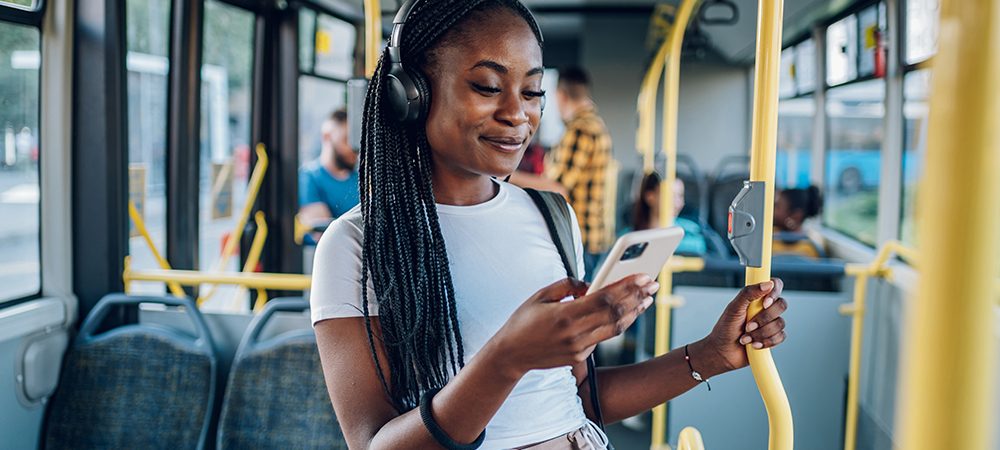Operators and authorities are working hard to deliver connected transport services that offer optimum experience. Where personal vehicles offer a seamless and easy experience to those that own them, public transport authorities must strive to build a competitive advantage against cars by enabling a seamless journey from start to end, argues Aaron White, UK Business Development Director UK at Cubic Transportation Systems.
If there is one thing that the public transport industry has learnt from the significant dip caused by the COVID-19 pandemic, it is that passenger experience must be the top priority. Only recently did usage of the underground return to 90% of pre-pandemic levels, demonstrating it’s more important than ever to engage and attract passengers. At the same time, eyewatering petrol prices and congested traffic are putting people off using personal vehicles. The industry has an immediate opportunity to capitalise on this by encouraging the use of multi-modal and ride-sharing platforms – but it needs to act quickly and collaboratively.
Multi-modal and connected services are the future
The path towards adopting multi-modal systems has been full of twists and turns, including some quick wins and early setbacks, but ultimately has been rerouted with a renewed focus on consumer mobility and accessibility. Such systems are a combination of public and private transportation services, integrated within a specific regional setting, offering comprehensive, user-oriented travel choices that facilitate end-to-end journeys through a unified payment system. In this context, single payments are the connective tissue that makes end-to-end journeys seamless.
This innovative approach aims to promote fairness in public access while striving to meet the overall mobility needs of individuals, with passengers at the centre. In this ecosystem, providers collaborate by exchanging data and incorporating a wide array of transportation options encompassing public, private and shared services. To achieve this integration, they leverage application programming interfaces (APIs) and software development kits (SDKs). Providers then employ standardised foundational elements, such as account-based ticketing, enabling streamlined processes and integrated ticketing.
In this model, multi-modal transport is not limited to a single app or interface, rather it is a constantly evolving experience. Thus, passengers can use one authentication to plan journeys across a range of modes and channels, integrating payment at the same time. London is a great example of connected services, with the underground, buses, river taxis and trams all part of one complex network with a single mode of payment and a unified journey planner.
Hitting multi-modal milestones
Public transit professionals have diverse motivations to expand multi-modal transportation systems outside their own services. One reason is to enhance the well-being of residents by offering increased transportation options and improved reliability. Another goal is to promote transportation equity by providing cost-effective travel choices accessible to all members of the community. At the same time, leaders aim to reduce traffic, thereby minimising emissions and boosting the air quality for locals. Furthermore, agencies are under pressure to boost ridership to maximise returns on the significant capital and operating expenditures invested in public transportation services.
Most agencies already offer some type of multi-modal service, such as passengers transferring seamlessly between bus and underground. Users can also often access rideshares and city bikes, however, these are not usually connected, forcing passengers to patch together different modes and pay for each separately. By enabling integrated access across a larger range of transit options, agencies can help more people to choose connected services, driving revenue and profit for all stakeholders.
Determining success
There is no single way to guarantee the success of integrated, connected services; it depends on each city’s unique demands. However, the biggest driver of success is participation: the more options available, the more riders can be expected. This can be encouraged by using the vast amounts of data generated to create new innovations while using a single seamless interface for convenience and to enforce policies.
By collaborating with private sector organisations, such as rideshare and bikeshare companies, public transit agencies expand the array of travel options available to consumers, granting them greater choice and flexibility in their journeys. These strategic partnerships not only offer more opportunities for transportation but also enable public transport agencies to address network gaps effectively. By leveraging these alliances, transportation reliability is enhanced for users, and first- and last-mile transportation challenges are efficiently resolved, providing seamless solutions for consumers.
Many transit agencies are also limited by financial constraints which make expanding fixed-route services challenging. On the other hand, private companies have their own services that can complement the public options and add new capabilities. Providers offer platforms that seamlessly integrate various transportation modes, data, customer journey planning, payment systems, policies, operations and customer service, however, there is no one-size-fits-all solution readily available. Agency teams play a pivotal role in determining how services are structured and executed to cater to their specific requirements.
Passengers win with this approach by using a single authentication and interface to access a vast range of transit options, simplified payment and detailed journey planning. Cash is no longer needed in a contactless environment, and riders can use one single touchpoint to purchase travel services across multiple modes. Agencies can also incentivise users with discounts for travelling off-peak, for example, or reaching a set number of journeys. At the same time, cities can reward agencies for reducing pollution or hitting target passenger numbers. Thus, a dynamic feedback loop is created where people and organisations take part to reach shared ambitions.
The future of transit
Creating robust connected services is a constantly evolving journey, but one that needs to be proactively driven by all involved. By collaborating with partners, providers can establish a shared strategy and mutual objectives. They can collectively determine the transportation modes they wish to integrate and devise a roadmap for the expansion of mobility services within their region. This collaborative process involves the creation of common data standards and a robust data foundation. Such an approach ensures the availability of reliable information and valuable insights, essential for supporting
Click below to share this article

